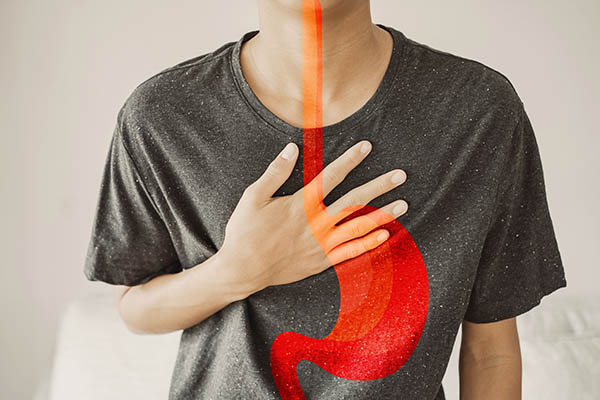Foods that Trigger Acid Reflux, and Foods that Can Prevent It

What does everyone with acid reflux have in common? The same as everyone without it: A love of eating certain foods.
The difference is that for people with acid reflux, some of those favorite foods tend to come back in through the “out” door – the muscle at the bottom of the food pipe (esophagus) that should stay closed after food enters the stomach.
For these people, lunch can turn into revenge of the killer tacos.
Many of us experience this once in a while – the burning sensation in the chest and neck that occurs when your stomach contents irritate the lining of the esophagus. There’s a reason acid reflux is called heartburn. However, if uncomfortable burning, bloating, and burping follow nearly every meal, the condition is likely chronic.
Chronic, but not uncommon: Nearly one in five people have gastroesophageal reflux disease (GERD), the medical term for persistent acid reflux. All of these patients share a complex relationship with eating. And for all of them, managing GERD requires one thing in common: changing what’s on your plate.
How Can I Be Sure This Is GERD?
In fact, experimenting with different foods and how your body responds can help you identify the trouble makers. But first, you’ll want to ensure that your symptoms are indeed signs of GERD. In addition to heartburn, they include:
- Frequent burping
- Bad breath or a sour taste in your mouth
- Chronic sore throat and/or cough
- Non-burning chest pain that radiates to the back
- Trouble swallowing (dysphagia)
Foods That Might Trigger Acid Reflux
If the above symptoms flare up after you eat, it’s likely because something on your plate is causing the esophageal “door” muscle (the sphincter) to open when it shouldn’t. Common GERD-triggers include:
- Oily, high-fat, and fried foods, including chips, fries, butter, and cheese. These foods can relax the sphincter and delay the stomach from emptying.
- Fatty and processed meats, such as bacon, sausage, hot dogs, and some cold cuts. These too can slow digestion and relax the sphincter.
- Hot peppers and spices like chili powder, cayenne pepper, and curries. These ingredients carry capsaicin, a chemical that can irritate parts of the esophagus.
- Tomatoes and tomato-based sauces and juices, which have high acid content.
- Citrus fruits and juices, including pineapple, orange and grapefruit, also for high acids.
- Chocolate and caffeine, because they contain a chemical that relaxes the sphincter. Coffee can also increase the release of acid.
- Peppermint, garlic, and onions, which tend to relax the sphincter.
- Carbonated beverages, which can make the stomach bloat and add pressure on the sphincter.
Foods That Can Calm Acid Reflux
Fortunately, for nearly every type of food you should limit to avoid acid reflux, there are foods that can serve as delicious substitutes. These menu items include:
- Most fruits and vegetables. Green vegetables are especially good for promoting healthy digestion.
- High-fiber foods, which help make you feel full. Good choices include whole grains including oatmeal, brown rice, and quinoa; legumes (including lentils and peas); and wheat bran.
- Healthy fats including nuts, olive oil, avocado, and seeds.
- Lean meats and seafood, including chicken and fish, which can replace fatty meats when grilled, baked, broiled, and poached.
- Foods with high alkaline levels, including bananas, cauliflower, melons, ginger, and fennel.
- High-water foods, because water can dilute stomach acid. Examples include soup and bone broths, herbal teas, cucumbers, watermelon, and lettuce.
Make Food Your Friend
There are long-term reasons to stop feeding GERD today. If the condition becomes severe, it can lead to Barrett’s esophagus, a serious condition that can develop into esophageal cancer.
No spicy tacos are worth that risk. If you know you’re experiencing acid reflux symptoms, keep a diary to identify food triggers and contact a doctor, who can perform a number of tests to determine the severity of your condition.
Until then, opt for fish tacos – hold the spice.
Learn more about what you can do to manage – and prevent – acid reflux. Learn more about the symptoms and treatment of GERD, and access helpful resources including our video on heartburn.
